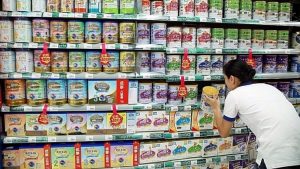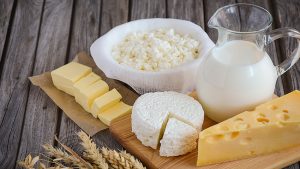
Demand for cheese in China is on the rise and the forecasts for growth are bullish but there remain barriers to consumption. GlobalData Consumer puts forwards ways in which manufacturers could capitalise on increased interest in the product.
China’s cheese market is small when compared to dairy segments such as liquid milk and drinkable yogurt – but it is expanding and is forecast to see solid growth.
However, most Chinese consumers are still not used to the flavours and aroma of cheese. Therefore, knowing how to change Chinese consumers’ taste preferences will be the key to opening up the market further to more shoppers.
GlobalData research from August showed 32% of consumers in China were looking to increase their dairy intake as much as possible, with a further 47% are trying to consume a moderate amount. In the same survey, when asked which foods they preferred to snack on, more than half (53%) of consumers said dairy items.
This data suggests Chinese shoppers see dairy as a desirable part of their diet. However, China’s average cheese consumption is still relatively low, especially compared to neighbouring countries, such as Japan and South Korea. According to the OECD, Japan and South Korea’s cheese consumption per capita stands at 2.35kg and 3.09kg respectively, while China is lagging behind at 0.3kg.
In the past, the biggest cheese consumers in China were ethnic minorities, such as Mongolians, or citizens returning from travels abroad. Despite growing interest, flavour and how to combine cheese with other foods remain barriers to consumption.
In China, cheese products that are targeted at children are the most popular cheese offerings. Liyi, Mengniu Dairy, Bright Dairy are among the dairy majors that have cheese products aimed at kids. Those born in the 1980s and 1990s are starting to become parents and they are seeking more nutritious foods for their children. Most cheese products aimed at kids tout their high calcium and protein levels, while they also come in a stick shape or even on a stick (like an ice lolly) for easier child-friendly consumption. This new generation who are growing up consuming cheese will be another big potential consumer group to capitalise on in the future.
There is an increasing number of food and drink brands that have begun to launch cheese flavours as part of new snack and dairy offerings. The Xiangpiaopiao brand offers an instant milkshake that comes in a sea salt and cheese blended flavour, while the Qiaqia brand has released cheese-flavoured sunflower seeds. These new launches provide the opportunity for consumers to become accustomed to the taste and smell of cheese and its different uses in food.
Elsewhere, creating a fusion dish with cheese by combining it with local foods could provide a new marketing opportunity to manufacturers.
A trend that was witnessed in Japan during the 1990s saw consumers opting for toast for breakfast and this provided the opportunity for manufacturers in Japan to market a processed cheese specifically for that meal occasion. Now, ‘toast cheese’ has become an important product on the Japanese market.
In South Korea, meanwhile, there is a fusion dish that involves a Korean hot dog filled with cheese or corn cheese (a Korean dish made of sweetcorn and mozzarella cheese). Although China does not currently have any well-known fusion dishes using cheese, there are opportunities for manufacturers to get creative and introduce the product to the Chinese market in new and exciting ways.
According to GlobalData, the value of China’s cheese market is expected to grow from a forecasted US$1.06bn in 2020 to US$1.96bn in 2025, a compound annual growth rate of circa 13%. China’s cheese market is growing rapidly and knowing how to capitalise on new trends will be vital for manufacturers hoping to profit from the potential cheese boom.























